The trade relationship between China and the USA is one of the most significant economic partnerships in the world. China is the largest exporter to the USA, supplying a wide range of goods from electronics and machinery to textiles and consumer products. According to the United States Census Bureau, trade in goods between the two countries amounted to over $600 billion in recent years. This extensive trade underscores the importance of efficient and reliable shipping solutions.
For American importers, understanding shipping durations is crucial for several reasons. Timely delivery of goods impacts inventory management, customer satisfaction, and overall business operations. Shipping delays can result in stockouts, increased costs, and lost sales opportunities. Moreover, knowing the expected transit times helps in planning and optimizing the supply chain to mitigate risks and enhance operational efficiency.

This article aims to provide a comprehensive guide for American importers on shipping durations from China to the USA. By covering the factors that influence shipping times, typical durations for different modes of transportation, and strategies to minimize delays, this guide equips importers with the knowledge they need to make informed decisions and streamline their logistics processes.
Factors Influencing Shipping Durations
Mode of Transportation
The mode of transportation is one of the primary factors affecting shipping durations.
- Sea Freight: Typically the most cost-effective option for large or heavy shipments, sea freight has longer transit times, usually ranging from 15 to 30 days, depending on the route and specific ports involved.
- Air Freight: Significantly faster but more expensive, air freight can deliver goods within 3 to 7 days. This mode is often used for high-value or time-sensitive shipments.
- Rail and Trucking Options: For certain inland destinations, a combination of rail and trucking might be used. While not as common as sea or air freight, intermodal solutions can sometimes offer a balanced compromise between cost and speed.
Port Congestion and Delays
Port congestion can significantly impact shipping durations. Major ports in both China and the USA can experience bottlenecks due to high volumes of traffic, labor shortages, or operational inefficiencies. For example, the ports of Los Angeles and Long Beach often face congestion issues, which can add several days to the shipping process. Staying informed about current port conditions and choosing less congested ports when possible can help mitigate these delays.
Customs and Regulatory Procedures
Customs clearance is another critical factor that can affect shipping times. The complexity of customs procedures, documentation requirements, and inspection processes can vary widely between shipments. Delays in obtaining necessary permits, misfiled paperwork, or random inspections can all extend transit times. Working with experienced freight forwarders and customs brokers can help streamline this process and reduce the risk of delays.
Seasonal Variations
Shipping durations can also be influenced by seasonal variations. Peak shipping seasons, such as the period leading up to major holidays like Chinese New Year or Christmas, often see increased demand for shipping services, which can lead to longer transit times. Additionally, weather conditions can affect shipping schedules, particularly for sea freight, where storms or rough seas can cause delays.
Carrier Reliability and Service Frequency
The reliability of the chosen carrier and the frequency of their services also play a role in shipping durations. Some carriers may have a reputation for on-time deliveries, while others may frequently experience delays. Additionally, the frequency of sailings or flights on a particular route can affect how quickly goods are shipped. For example, a route with daily sailings will generally offer shorter lead times compared to a route with weekly sailings.
Sea Freight Shipping Durations
Typical Sea Freight Transit Times
Sea freight remains the most popular mode of transportation for importers due to its cost-effectiveness and capacity to handle large volumes of goods. However, it also has the longest transit times compared to other shipping methods. Typical sea freight transit times from China to the USA range from 15 to 30 days, depending on various factors such as the specific ports of departure and arrival and the efficiency of the shipping line.
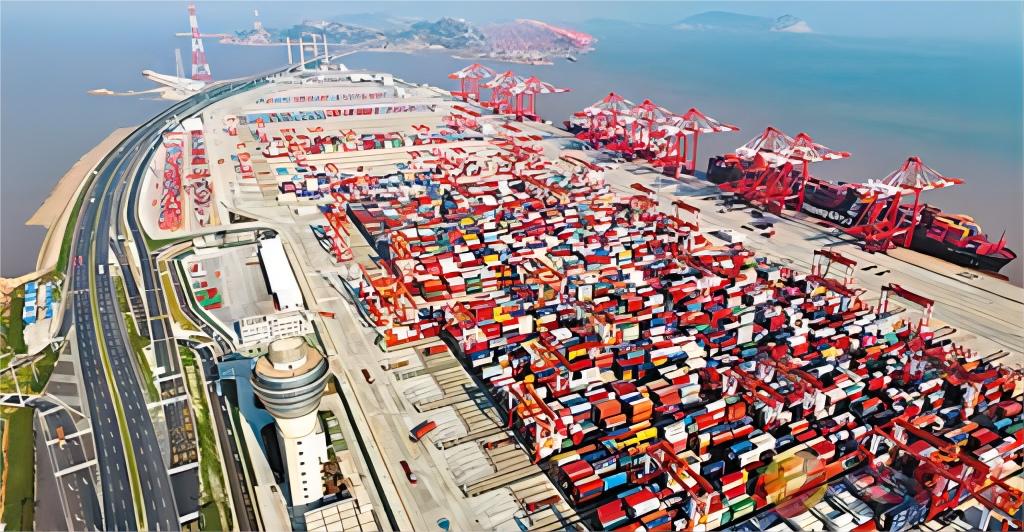
- Major Ports in China
- Shanghai Port: As the busiest container port in the world, Shanghai handles a significant portion of China’s exports to the USA. Transit times from Shanghai to major US ports like Los Angeles or Long Beach typically range from 15 to 20 days.
- Shenzhen Port: Another key port in China, Shenzhen, is close to many manufacturing hubs. Shipping from Shenzhen to the US West Coast usually takes between 18 to 22 days.
- Ningbo Port: Known for its efficiency, Ningbo offers transit times similar to Shanghai, generally around 15 to 20 days to the West Coast.
- Major Ports in the USA
- Port of Los Angeles and Long Beach: These twin ports are the primary gateways for goods entering the USA from Asia. They handle a significant volume of container traffic, which can sometimes result in congestion and longer unloading times.
- Port of New York and New Jersey: Serving the East Coast, this port is crucial for importers targeting markets in the eastern and central USA. Transit times from Chinese ports to New York typically range from 25 to 30 days.
- Port of Savannah: An emerging hub for East Coast imports, Savannah offers competitive transit times and efficient handling, making it a strategic choice for many importers.
Impact of Route and Shipping Line
The specific sea route and shipping line chosen can also influence transit times. Shipping lines often offer different service levels, with some providing faster, premium services and others offering slower, more economical options. Additionally, the route taken—including whether the vessel makes stops at intermediate ports—can affect overall transit times. Direct routes with fewer stops are generally faster but may come at a higher cost.
Air Freight Shipping Durations
Typical Air Freight Transit Times
Air freight is the fastest mode of transportation for shipping goods from China to the USA, with transit times typically ranging from 3 to 7 days. This speed makes it ideal for high-value, time-sensitive, or perishable goods that require quick delivery.
- Major Airports in China
- Shanghai Pudong International Airport (PVG): As one of China’s busiest air cargo hubs, PVG offers frequent flights to major US destinations. Typical transit times range from 3 to 5 days, depending on the specific service and route chosen.
- Beijing Capital International Airport (PEK): Known for its extensive international connections, shipments from PEK to the USA can be delivered within 4 to 6 days.
- Guangzhou Baiyun International Airport (CAN): Serving southern China, CAN offers competitive transit times to the USA, generally around 3 to 5 days.
- Major Airports in the USA
- Los Angeles International Airport (LAX): As a primary entry point for air cargo from Asia, LAX handles a significant volume of goods from China. Transit times from major Chinese airports to LAX typically range from 3 to 5 days.
- John F. Kennedy International Airport (JFK): Serving the East Coast, JFK is a key destination for air freight shipments. Transit times from China to JFK usually range from 4 to 6 days.
- Chicago O’Hare International Airport (ORD): A central hub for distributing goods across the USA, ORD offers transit times of 4 to 6 days from China.
Advantages and Limitations of Air Freight
Air freight offers several advantages over other modes of transportation:
- Speed: The primary advantage of air freight is its speed, allowing goods to be transported from China to the USA in a matter of days.
- Reliability: Air freight schedules are generally more reliable than sea freight, with fewer delays and more predictable transit times.
- Security: Air cargo is subject to stringent security measures, reducing the risk of theft or damage.
However, these advantages come with certain limitations:
- Cost: Air freight is significantly more expensive than sea freight, making it less suitable for low-value or bulk shipments.
- Capacity: Airplanes have limited cargo capacity compared to ships, which can restrict the volume of goods that can be transported in a single shipment.
- Environmental Impact: Air freight has a higher carbon footprint compared to sea freight, which may be a consideration for companies focused on sustainability.
By understanding the typical transit times and weighing the advantages and limitations of air freight, American importers can make informed decisions that align with their business needs and logistics strategies.
read more:
- Shipping from China ShangHai to USA
- Shipping from China GuangZhou to USA
- Freight forwarder China to USA Amazon
- Navigating the Seas: Shipping from Shenzhen, China to the USA
Intermodal and Multimodal Transportation
Combining Sea, Air, and Land Transport
Intermodal and multimodal transportation solutions involve the combination of two or more different modes of transport—sea, air, and land (rail and trucking)—to move goods from China to the USA. These approaches are particularly effective for optimizing shipping durations, cost efficiency, and logistical flexibility.
Intermodal Transportation refers to the use of multiple modes of transportation where each mode operates independently, but is interconnected through standardized containers or trailers. For example, a shipment might travel by sea from a Chinese port to a US port and then be transferred to a rail or truck service for final delivery.
Multimodal Transportation involves a single contract and bill of lading for the entire journey, even though multiple transportation modes are used. This method simplifies the administrative process and provides a more cohesive logistics solution.
Benefits and Challenges
Benefits:
- Flexibility: Combining different modes allows for greater flexibility in routing and scheduling, which can optimize transit times and costs.
- Cost Efficiency: By leveraging the strengths of each transportation mode, importers can achieve a balance between speed and cost. For example, using sea freight for the bulk of the journey and air freight for the final leg can expedite delivery while controlling expenses.
- Reduced Congestion Impact: Intermodal solutions can help avoid congestion at major ports by using less busy terminals and alternative transportation methods, thereby reducing delays.
Challenges:
- Coordination Complexity: Managing multiple modes of transport requires meticulous planning and coordination to ensure seamless transitions between each stage of the journey.
- Documentation and Compliance: Each mode of transport may have its own set of regulatory and documentation requirements, complicating the logistics process.
- Potential Delays: Delays in one mode of transport can cascade through the entire supply chain, making it crucial to have contingency plans in place.
By leveraging intermodal and multimodal transportation solutions, American importers can enhance their supply chain efficiency and better manage shipping durations from China to the USA.
Strategies for Minimizing Shipping Delays
Choosing the Right Freight Forwarder
Selecting a reliable and experienced freight forwarder is crucial for minimizing shipping delays. A proficient freight forwarder can navigate the complexities of international logistics, provide valuable insights into the most efficient routes and modes of transportation, and handle all necessary documentation and compliance requirements. When choosing a freight forwarder, consider their reputation, network of carriers, and expertise in China-USA trade.
Effective Communication and Coordination
Clear and consistent communication with all stakeholders, including suppliers, carriers, and customs brokers, is essential for preventing delays. Establishing a robust communication plan helps ensure that everyone is aligned and informed about shipment schedules, potential issues, and contingency plans. Regular updates and proactive problem-solving can mitigate delays and keep the supply chain running smoothly.
Utilizing Technology for Real-Time Tracking
Advanced tracking technologies and software can provide real-time visibility into the status of shipments, allowing importers to monitor progress and address potential issues promptly. Tools such as GPS tracking, electronic data interchange (EDI), and transportation management systems (TMS) offer critical insights into transit times, port congestion, and customs clearance processes. By leveraging these technologies, importers can make data-driven decisions and optimize their logistics operations.
Planning for Seasonal Peaks and Congestion
Seasonal variations and peak shipping seasons can significantly impact transit times. For example, the period leading up to Chinese New Year often sees a surge in shipping volumes, resulting in port congestion and longer transit times. To mitigate these effects, importers should plan their shipments well in advance, consider alternative routes or less congested ports, and build buffer times into their schedules. Collaborating closely with suppliers and freight forwarders to forecast demand and plan accordingly can help avoid delays during peak periods.
Diversifying Transportation Strategies
Relying solely on one mode of transportation or one carrier can increase the risk of delays. By diversifying transportation strategies and using a mix of sea, air, and land transport, importers can create more resilient supply chains. Additionally, having multiple carrier options allows for flexibility in case of disruptions or delays with a particular service provider.
Establishing Strong Relationships with Carriers
Building strong relationships with carriers can lead to better service levels, priority handling, and more reliable transit times. Regular communication, transparency, and mutual trust are key components of successful partnerships. By fostering good relationships with carriers, importers can enhance their negotiating power and secure more favorable terms and service commitments.
By implementing these strategies, American importers can minimize shipping delays, optimize their supply chain operations, and ensure timely delivery of goods from China to the USA.
FAQs
What are the typical shipping durations from China to the USA?
- Sea Freight: 15 to 30 days, varying by specific ports and shipping lines.
- Air Freight: 3 to 7 days, depending on the departure and destination airports.
What factors can affect shipping times?
- Mode of transportation, port congestion, customs clearance, seasonal variations, and carrier reliability can all influence shipping durations.
Which ports are commonly used for shipping goods from China to the USA?
- Major Chinese ports include Shanghai, Shenzhen, and Ningbo. Key US ports include Los Angeles, Long Beach, and New York.
How can I minimize shipping delays?
- Choose a reliable freight forwarder, maintain effective communication, utilize real-time tracking technologies, and plan for peak seasons and potential congestion.
Is air freight always faster than sea freight?
- Generally, yes. Air freight typically takes 3 to 7 days, while sea freight takes 15 to 30 days. However, air freight is significantly more expensive.
What are the benefits of intermodal transportation?
- Intermodal transportation offers flexibility, cost efficiency, and the potential to avoid congestion by combining multiple modes of transport.
How does customs clearance impact shipping durations?
- Delays in customs clearance due to complex procedures, documentation issues, or random inspections can extend transit times. Experienced freight forwarders can help navigate these processes more efficiently.
References
- World Shipping Council: An authoritative resource on global shipping standards and practices.
- U.S. Customs and Border Protection (CBP): Official information on customs regulations, procedures, and import requirements.
- International Air Transport Association (IATA): Provides insights on air freight regulations, standards, and best practices.
- Port Authorities: Detailed information and updates on major ports, including congestion, operational efficiencies, and shipping schedules.
- Freight Forwarding Companies: Practical insights and case studies on shipping durations, logistics strategies, and industry trends.

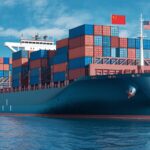





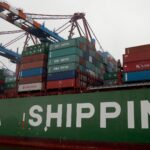



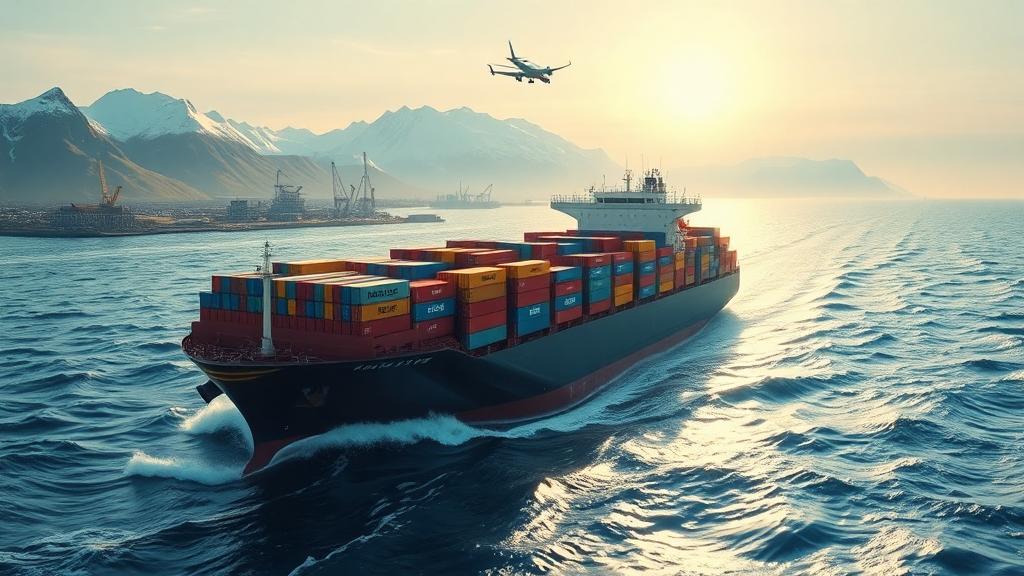
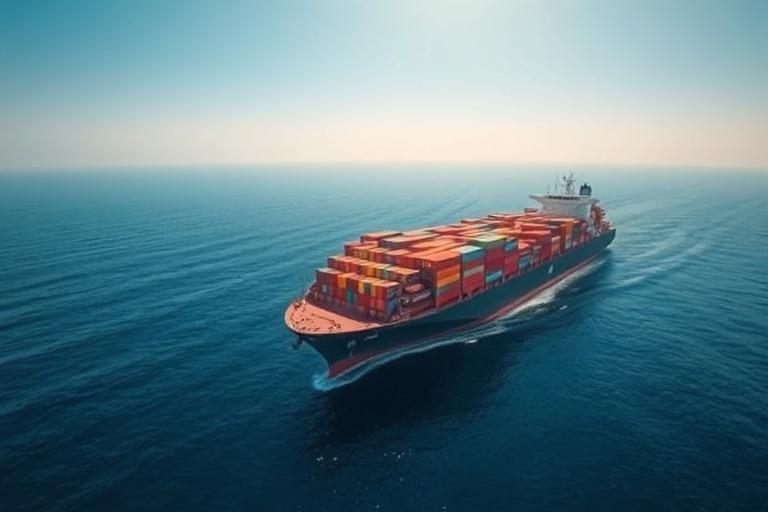







 Afrikaans
Afrikaans Shqip
Shqip አማርኛ
አማርኛ العربية
العربية Հայերեն
Հայերեն Azərbaycan dili
Azərbaycan dili Euskara
Euskara Беларуская мова
Беларуская мова বাংলা
বাংলা Bosanski
Bosanski Български
Български Català
Català Cebuano
Cebuano Chichewa
Chichewa 简体中文
简体中文 繁體中文
繁體中文 Corsu
Corsu Hrvatski
Hrvatski Čeština
Čeština Dansk
Dansk Nederlands
Nederlands English
English Esperanto
Esperanto Eesti
Eesti Filipino
Filipino Suomi
Suomi Français
Français Galego
Galego ქართული
ქართული Deutsch
Deutsch Ελληνικά
Ελληνικά Kreyol ayisyen
Kreyol ayisyen Harshen Hausa
Harshen Hausa Ōlelo Hawaiʻi
Ōlelo Hawaiʻi עִבְרִית
עִבְרִית हिन्दी
हिन्दी Hmong
Hmong Magyar
Magyar Íslenska
Íslenska Igbo
Igbo Bahasa Indonesia
Bahasa Indonesia Gaeilge
Gaeilge Italiano
Italiano 日本語
日本語 Basa Jawa
Basa Jawa ಕನ್ನಡ
ಕನ್ನಡ Қазақ тілі
Қазақ тілі ភាសាខ្មែរ
ភាសាខ្មែរ 한국어
한국어 كوردی
كوردی Кыргызча
Кыргызча ພາສາລາວ
ພາສາລາວ Latin
Latin Latviešu valoda
Latviešu valoda Lietuvių kalba
Lietuvių kalba Lëtzebuergesch
Lëtzebuergesch Македонски јазик
Македонски јазик Malagasy
Malagasy Bahasa Melayu
Bahasa Melayu മലയാളം
മലയാളം Maltese
Maltese Te Reo Māori
Te Reo Māori मराठी
मराठी Монгол
Монгол ဗမာစာ
ဗမာစာ नेपाली
नेपाली Norsk bokmål
Norsk bokmål پښتو
پښتو فارسی
فارسی Polski
Polski Português
Português ਪੰਜਾਬੀ
ਪੰਜਾਬੀ Română
Română Русский
Русский Samoan
Samoan Gàidhlig
Gàidhlig Српски језик
Српски језик Sesotho
Sesotho Shona
Shona سنڌي
سنڌي සිංහල
සිංහල Slovenčina
Slovenčina Slovenščina
Slovenščina Afsoomaali
Afsoomaali Español
Español Basa Sunda
Basa Sunda Kiswahili
Kiswahili Svenska
Svenska Тоҷикӣ
Тоҷикӣ தமிழ்
தமிழ் తెలుగు
తెలుగు ไทย
ไทย Türkçe
Türkçe Українська
Українська اردو
اردو O‘zbekcha
O‘zbekcha Tiếng Việt
Tiếng Việt Cymraeg
Cymraeg יידיש
יידיש Yorùbá
Yorùbá Zulu
Zulu